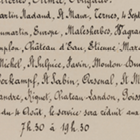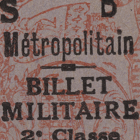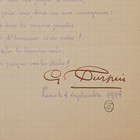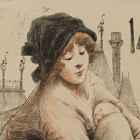Paris at war
Although it was a long way from the front and was mostly spared from the agonies of war, the “physiognomy” of Paris did experience significant changes. After early 1914, the city no longer seemed to have women, children, or old people living in it, and cars vanished from the city’s streets. Public transportation and concert hall schedules were disrupted, although they slowly came back to normal. Although it continued to be traumatized by the siege of 1870, the city was under serious threat of invasion only early in the war, when the government moved to Bordeaux and the capital came under military rule. Defending the trench camp meant security measures like checkpoints to control movement. But the strategy of the military governor, General Gallieni and the victory at the Marne ended any real risk of a land-based attack on the capital. Residents’ relief was expressed by mocking the Germans and elevating Gallieni to the status of Parisian hero. An iconography of Paris at war associated the capital city with the entire country, especially on July 14, Bastille Day, which was also celebrated as Paris Day. The bombardments that came at the end of the war sorely tested Parisians’ bravura and increased their immense relief when the Armistice was declared.




















